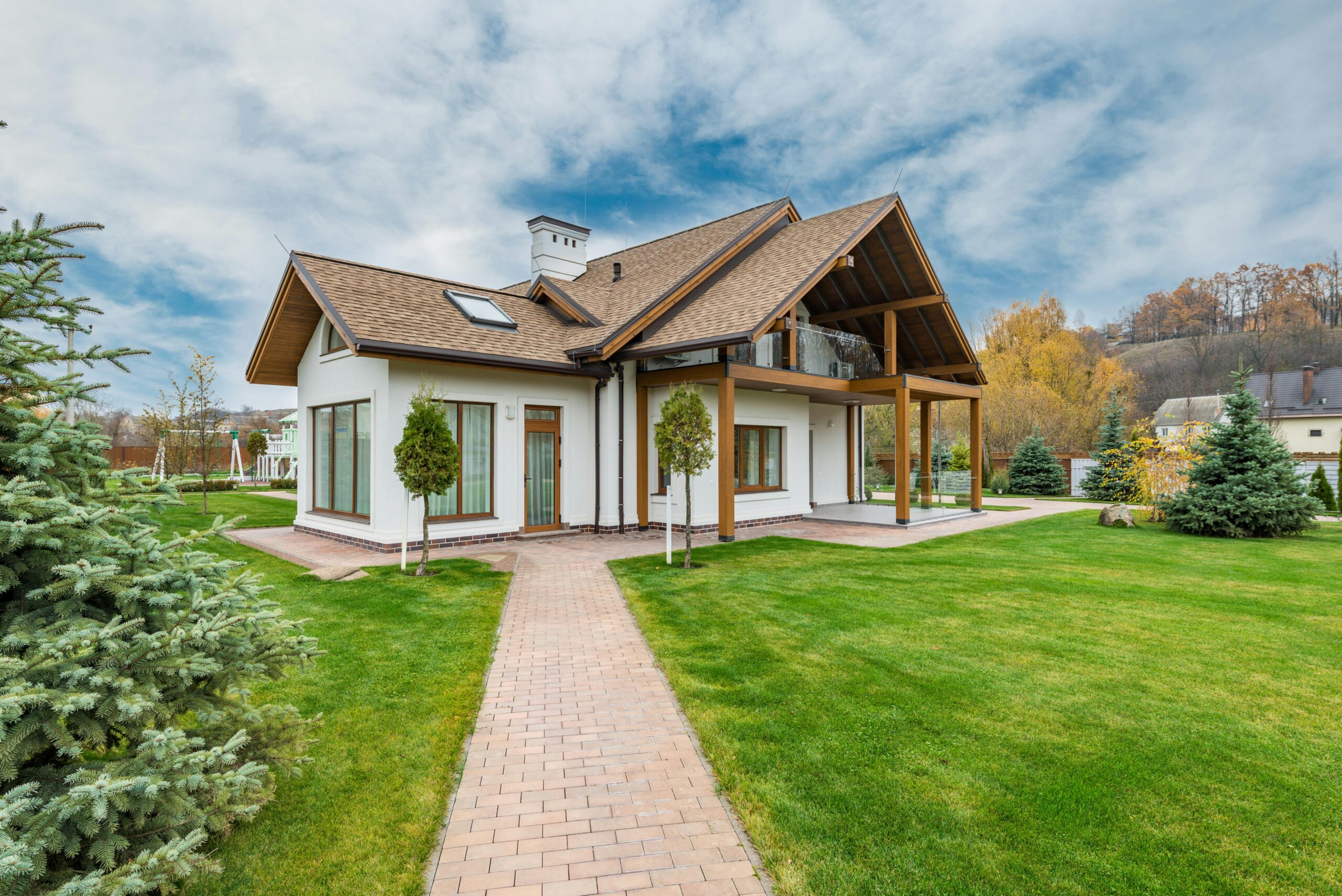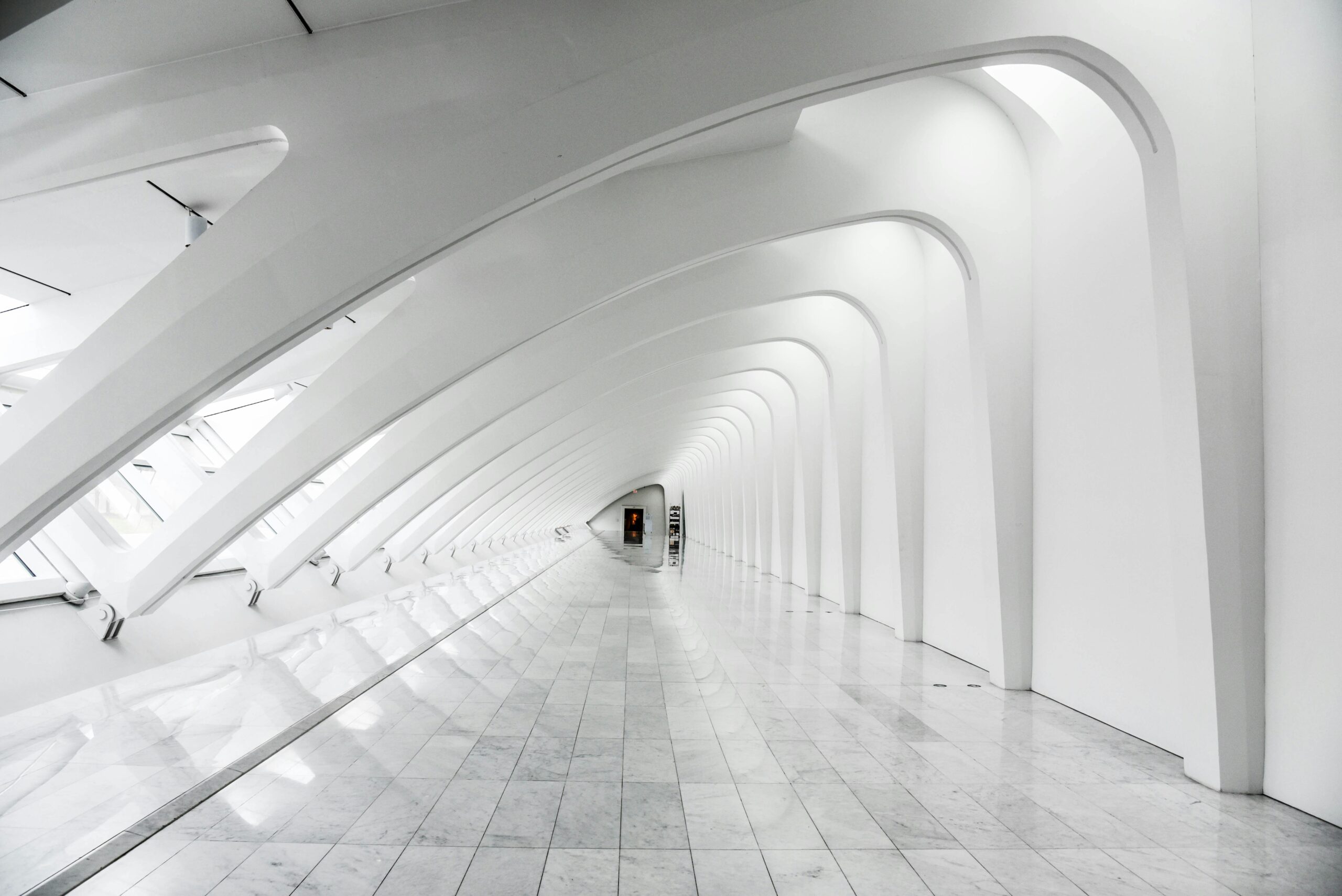As we are working in the 3D renderings market since 2011, we have seen how it changed, and how much the 3D materials, photorealism, and technology changed, the 3D world is an ever-evolving and growing space, so in this article, we want to have a look at what are and will be 3D Rendering trends in 2024 .
The ever-evolving world of 3D digital technology reshapes the design industry, offering a realistic visual experience for everyone who want to use it in their marketing campaigns as a tool.
Real-Time Rendering
Traditional methods of designing take a lengthy processing time and are not very efficient, and real-time rendering overcomes this issue. Interior designers and architects present their projects to their clients in an intriguing way in real-time. This technology was not even considered to be developed back when we started our company.
These models seek the viewers’ attention by creating an interactive visual, and they fully get involved in the designs. It helps the client to understand the design concept more clearly. Furthermore, Real-time rendering not only provides prompt visual feedback but promotes innovation as well. Architects may experiment with different options of designs and get the outcomes right away.
They can then alter the designs according to the need, which adds vitality and efficiency to the process of designing. By keeping in view the current advancement in real-time rendering features, we will look into prospective trends in 3D rendering.
In 2024, real-time rendering will be one of the fastest-growing trends in the 3D visualization world.
Moreover, the development of improved Graphic Processing Units and sophisticated algorithms has made the real-time 3D creation and manipulation a possibility. This advancement will surely influence other sectors like gaming, where an interactive environment is a quintessential feature.
We can not wait to use this new technology more and more in the real estate business and present more interior and exterior spaces using real-time rendering possibilities.
AI-Powered Rendering

In 2023 all the rage was AI and its’ possibilities and this trend will not stop in 2024, it will just get more powerful and helpful in many ways.
In the future, artificial intelligence will have significant impacts on 3D rendering. By analyzing and acquiring knowledge from data powered by artificial intelligence, rendering engines can create visually stunning and lifelike images. This technology will be used to develop graphics in the field of architecture, which will be better than before. Moreover, the film of the whole project could also be created by AI.
By inputting information such as style, room dimensions, and budget into AI, we can also produce realistic visuals. With this, interior designers can create multiple design concepts in a short time and find out what would be the best design to fit the demands and tastes of clients.
In addition to this, designers use AI to monitor the preferences of customers and predict the changing trends in architecture. Architects get powerful tools from AI-generated renderings, and these tools help them to communicate about the design with the clients effectively. Plus, projects can also be managed in a better way.
Cloud-Based Rendering
Cloud-based rendering uses cloud servers rather than powerful hardware. The major benefit of it is cost-effectiveness. Also, it offers accessibility, which mea ns you don’t need to invest in costly equipment, maintenance, and software licenses if you use cloud-based rendering.
Our company has been using cloud-based solutions for many years now, but now the possibilities are even bigger, considering that we will need some powerful online solutions for AI and Real-Time rendering technologies.
This is easily accessible on the network, so you can have a smooth and streamlined collaboration with your team members. Similarly, 3D rendering services are becoming more and more reliable and flexible due to the cloud.
Once, cloud servers needed sophisticated hardware, but now, with advancement, they are so easy to use that even a layman can do rendering jobs. This advancement in rendering resources toughens worldwide competition for self-employed individuals like freelancers and small enterprises.
AI-Assisted Generative Designs
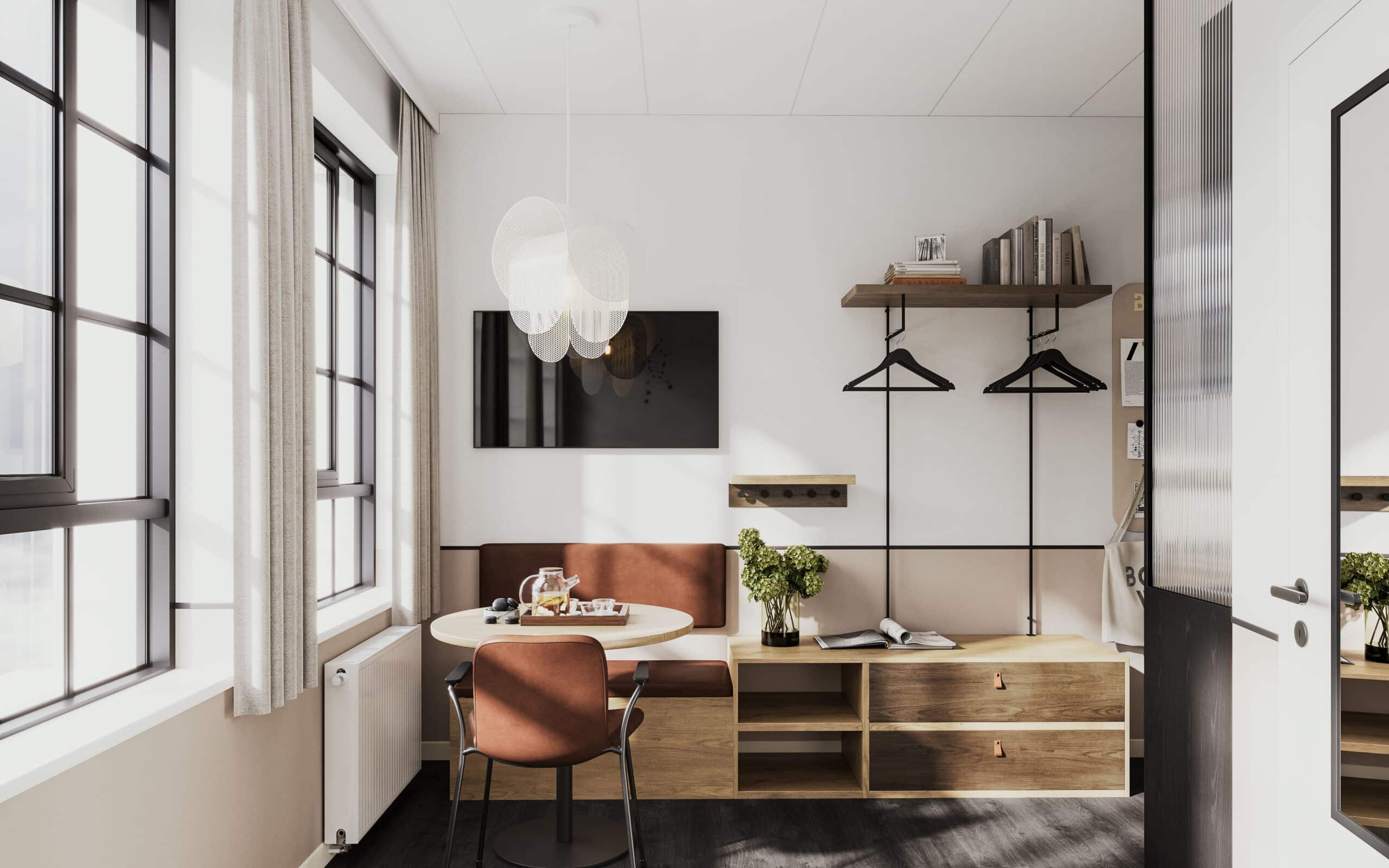
You can create different designs, choices, and alternatives for designs according to specific requirements. Architects may use AI to generate several versions of designs that meet the standard obligations, such as the conservation of energy and its efficient use and visual appeal. This method encourages innovation and aids architects in exploring unique and more stylish ideas for designs.
Energy Efficiency
Designers are inclined towards using energy-efficient rendering algorithms and hardware. Low-power GPUs and energy-efficient CPUs reduce the consumption of energy without compromising the rendering quality.
Virtual Reality & Augmented Reality (VR & AR)
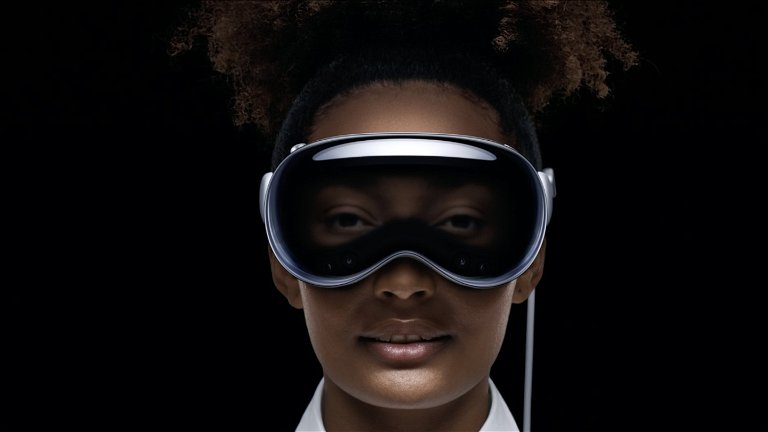
Virtual worlds include fabricated, upgraded, and virtual reality rendering. The demand for virtual reality has expanded to different sectors, particularly the industry of interior design. There is a strain of revolution, including the way that architectural design presentations are made in the future. Thanks to this technology, architects, developers, contractors, and homeowners may all indulge themselves in the virtual world.
VR and AR provide an unparalleled degree of interactivity with building designs. It is now possible for clients and architects to enter virtual locations and examine them from various perspectives. Furthermore, there are haptic sensors, and by using them, customers may even feel, touch surfaces, or move objects in the virtual world or their future house. It gives them a true sense of the spatial experience. The architectural ideas can be displayed under varied environmental circumstances by the combination of augmented reality and 3D rendering. It offers insights into brightness, paint colors, and other aspects.
Virtual Reality helps designers create three-dimensional interiors that seem realistic and immersive. The client can view and interact with their interior concept before the time of practical implementation.
Both designers and clients can virtually step into the interior and have a realistic perspective of the ambiance and proportions. The virtual walkthrough experience helps clients evaluate the design and share their feedback, so this technology makes it easier for designers to understand and cater to the client’s requirements.
Designers are hoping for an increase in the use of AR and VR in many sectors. By 2024, 3D rendering will have further enhanced these technologies, and thus, users in the business, healthcare, and education industries will be more involved in this technology to have exciting experiences.
Keeping in mind that now even bigger players as Apple steps into the space of Virtual Reality we may see some leaps in technology and the virtual world will become even more real and relatable for everyday users.
Blockchain Technology
Blockchain technology offers transparency and security in 3D rendering, ensuring the design revisions are recorded. The technology supports a decentralized rendering network that uses the collective computing power of the blockchain network for time-effective processes.
This system is used more widely than cryptocurrencies. Blockchain keeps a track record of each modification and transaction to preserve the integrity of digital assets.
Mobile Rendering Apps
You can create and access 3D renderings from your smartphone using mobile applications. The primary advantage of this rendering application is that they are easily accessible, making it convenient for the designers to make real-time changes according to the demands of the client.
In the near future, the popularity of mobile rendering applications is expected to expand many folds as handsets become more powerful. You will be able to produce and utilize 3D content on the go with these applications. It will create new opportunities for social media and e-commerce sectors.
Collaborative Rendering
We expect that in 2024, the 3D rendering industry will be inclined more toward introducing technology that makes collaboration even easier. As a result, multiple designers can work on similar designs using multiple screens, making teamwork and communication possible for stakeholders.
With this real-time collaboration, you can record the design history and add comments directly on the image leading to reduced delays in the design process.
This will help to avoid mistakes and make the process much easier for all sides, not only for designers, architects, or constructors, but also for the builders, clients, and investors. Everyone will be able to see at what stage their project is and everyone can plan their actions accordingly.
Holographic rendering
The world of holographic solutions was more used in sci-fi movies and everyone was waiting for it to become reality. Now the technology is advanced enough that it can be created for a much wider use and not only for fancy expensive shows or concerts.
Holographic rendering will cause a dispersion of the boundaries separating the physical and virtual worlds. This trend will be used to provide absorbing encounters in teleconferencing, education, and recreation.
As providing more realistic experiences is trending in 2024, holographic rendering is one of the ways to provide an immersive experience. The holographic renderings create images with real three-dimensional depth. It gives the designers and customers clear ideas about the proportions they can perceive the special relationship between different objects.
Immersive 3D Tours Redefining Engagement
Visiting construction sites has become an obsolete concept now with the introduction of virtual tours. You don’t need to physically walk through the construction area to see how perfectly your building is framed. To prevent this loss of energy and time, physical visits are being replaced by virtual, three-dimensional tours.
Similarly, when you study the details and status of a project in the form of static illustrations, it sounds dry and boring. The latest trends in 3D rendering have colored this dull aspect, too. You will get a more engaging view and 360-degree scenery through these excursions. Moreover, if you want close-up views, you can zoom in. Contrarily, to get the picture wider, zoom it out. You can also increase or decrease the speed of tours according to your choice while exploring the areas.
When it comes to exhibiting buildings, interior designs, and architectural projects, these tours are revolutionary. They provide viewers with a feeling of independence so they may concentrate on areas of interest and learn more about the design.
Photorealistic Materials and Lighting
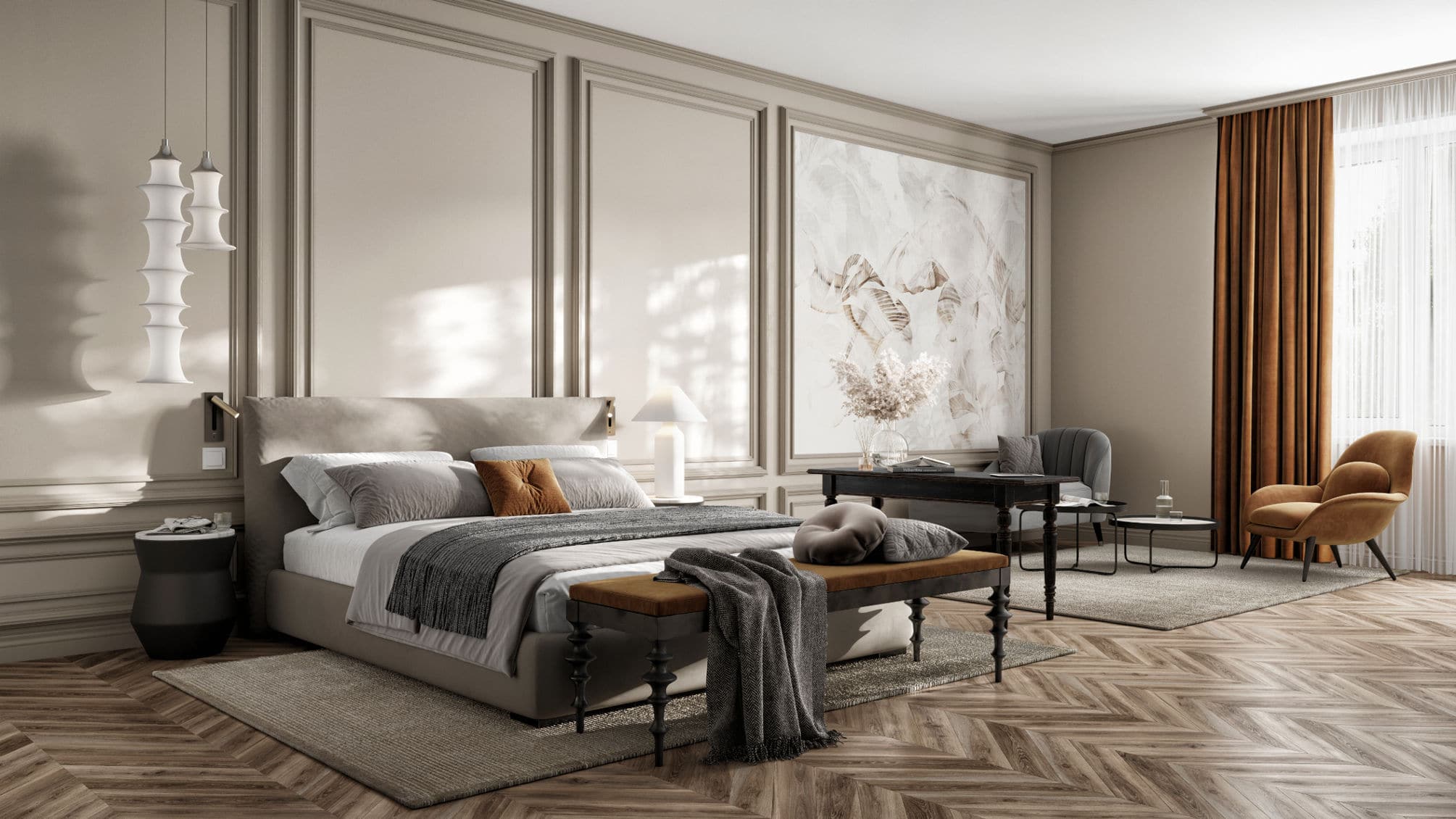
Due to advancements in rendering software, photorealistic textures and effects of illumination are no longer a dream. Traditionally, architectural designs have been used to describe the structures of buildings. But now, these representations are getting so much similar to real photos that you can’t even distinguish them from each other. Interior designers and architects may convey their ideas attractively and appealingly with this degree of naturalism.
Read more: 10 reasons why 3D product visualization is more efficient than product photography
You can make your presentations more effective and impressive to clients using a photorealistic rendering. It makes your marketing efforts more fruitful. Furthermore, It enables extremely accurate visuals of the finished product to stakeholders.
Parametric Design and Computational Modeling
Parametric and computer modeling have revolutionized the classical styles and frameworks of design and architecture. Architects, by using these techniques, can build intricate and naturalistic forms that were previously difficult to produce by using analytics to specify and alter criteria for design.
Through this technology, you can make the outlook of your architecture in a way that is environmentally friendly because it is a particularly good fit for parametric design. Designers are allowed to maximize plans for exposure to sunlight, ventilation from the outdoors, and efficiency of energy while producing ecologically friendly buildings.
Advancements in computational technologies have made it easy for architects to bring diversity to their renderings. Computer systems will get better and quicker in the near future as quantum computing becomes feasible. The efficiency and rapidity of 3D rendering, as well as various rendering features, will undoubtedly increase as a result of these advancements.
The primary obstacle to producing realistic renderings and visual presentations at first was computing power. However, you will be glad to hear that 3D rendering skills have exceeded 1990 and 2000 estimates. Thus, this is no longer an issue. In 2024, architects might be able to easily attain an unparalleled degree of clarity and breathtaking visuals if these advances continue.
Cross-Platform Collaboration for Global Teams
Another significant value created by 3D rendering is the freedom from the boundaries of time and space. Now, the haste of reaching from one area of construction to another will not bother you anymore. Architectural teams can frequently work in several different periods and locales.
Additionally, Cloud-based platforms and project management software are examples of interconnected technologies. These technologies are necessary for smooth integration and interaction between builders, designers, and clients.
Architects need to be in contact and communicate across their working platforms to improve productivity and simplify the design process. This necessity is fulfilled by 3D rendering. It guarantees that every team member may offer suggestions and feedback in real-time and also access the changes in the project.
Sustainability and Eco-Friendly Visualization
Do you acknowledge the necessity of saving the atmosphere from pollution? Of course, your answer would be yes. The issue of environmental pollution is causing big problems all around the world. Due to this day-by-day advancing pollution on earth, sustainability is becoming a worldwide issue rather than a local one.
Architectural rendering will highlight components that might prove toxic to the environment in designs in 2024. These attributes might consist of:
- Renewable Energy: A lot of people are turning to more environmentally friendly materials and adding energy-saving features to their houses, including solar panels. These renderings will promote the combination of solar panels, windmills, and other renewable energy sources.
- Green Building Materials: There will be a great emphasis on using low-VOC paints, recyclable steel, and reused wood. In terms of interior design, natural colors, peaceful ambiance, and natural, unprocessed materials will all be given more importance.
- Energy Efficiency: Illustrations will show how elements like double-glazed windows, smart heating and cooling systems, and effective insulation optimize energy use in designs.
- Green Spaces: Renderings will raise public awareness of how they can give an aesthetic touch to their buildings through outside green spaces, vertical gardens, and green roofs.
Using visual aids, developers and design professionals may encourage clients to choose eco-friendly designs.
Designing Biophilically
Interior spaces that promote natural elements are known as biophilic designs. In 2024, these designs will become more and more popular among the masses. You will likely see more interior representations with sunlight, lush vegetation, and eco-friendly materials.
So, get ready to witness this surprising change. It will promote designing environments that encourage the well-being of our ecosystem.
Engaging Storytelling Boosts Interest
Narrated stories are taking over the old-style graphics and animations in architectural rendering. Stories can explain the backgrounds of the architectural programs and, thus, engage more customers by involving them in the design concept.
There are several ways to tell an immersive story:
- Virtual Experiences: They let you explore a design as though you were part of a story. These stories can be based on the architectural history, the design process, or the experience of occupying or working in a particular area.
- Relevant Storytelling: Images may be used in stories that emphasize a larger context of a project, such as its historical relevance or its effects on the neighborhood.
- User-Driven Narratives: With the help of storytelling features of 3D rendering, you can navigate a virtual environment by yourself. As a result, it will draw more of your interest, and you will get more involved in these tools.
Expanding Design Options

When photorealistic software was initially introduced to the market, it contained several options for architectural designs. Still, the quantity of 3D design courses is growing daily. A few years ago, the alternatives for computer-aided design (CAD) were restricted and laborious. AutoCAD gave stick and line drawings.
However, at the time, besides being innovative, these software were ahead of their time. Additionally, it was not easy for everyone to afford them since a single subscription license was expensive.
Moreover, with the advancement in technology, software packages have become more sophisticated and expensive. Among them, a few of the reasonably priced software products are available. These include SketchUp Pro and Virtual Architect 3D, both of which run less than $100 annually.
If you are a beginner, you might benefit from free software programs that are capable of producing flawless 3D renderings.
Availability & Diversity
Today, there is a wide range of 3D modeling software and design tools available, and each of them has special features and suitability for various kinds of projects. In architectural visualization, the involvement of the client is becoming more and more important. Rendering technologies can replicate accessible locations.
It can now be helpful for architects and designers to create surroundings that are welcoming and useful for all people, even for people with special needs. This advancement is an anecdote of a dedication to increasing accessibility and inclusivity in building and design.
Personalization and Customization
In 2024, customization will enhance the popularity of 3D rendering among users and developers. Companies may design unique graphics based on the choices and demands of customers. The clients will be more satisfied and involved in it.
Conclusion
As 3D rendering technologies have developed, it contributed to improving the quality and accuracy of designing projects and mitigating time consumption. So, architects can accelerate the design process according to their time requirements. The field of architectural rendering has a lot of exciting prospects ahead as technology develops further.
In 2024 we will see much more 3D ultra-realism, a growing virtual world, and more collaboration tools for architects and interior designers. 3D renderings help not only to save time but also avoid materials and energy waste as every part included in the project can see in real time what exactly is needed to implement the project.
We will see more and more green solutions not only in the ways we make energy but also in the ways we build and renovate buildings. Greener materials will be more and more used in each construction.
As 2024 approaches, architectural rendering is evolving into a creative discipline that constantly exceeds our limits of imagination. Moreover, technology is not merely a tool for visualizing ideas.
In addition to improving their design skills, architects, designers, and visualization specialists can adopt these trends to provide their clients with a more engaging and educational experience from the ideation stage to the completion stage. A new age of design visualization is brought to light, leading us towards a bright future for architectural rendering.
FAQs
Q. What is Real-time Rendering, and How it’s Used in the Gaming Industry?
It is a technique by which you can create and present 3D graphics in real time without any delay. It withdraws a lot of your interest and keeps you more involved in it. In short words, you will get a more exciting and absorbing game experience.
Q. How can Sustainable Rendering Help Solve Global Issues?
Sustainable rendering works in an environmentally friendly way. It contributes to a more ecologically responsible strategy for architectural design and development by lowering the consumption of energy and greenhouse gas emissions.
Q. How does AI-powered Rendering Help in Improving Architectural Design?
AI-powered rendering can evaluate data, produce incredibly realistic and lively architectural representations, and assist designers and architects in making appealing choices regarding the design and presentation of their views.
Q. What are Biophilic Designs?
These are the designs in which the developers fabricate the interior environments by adding natural and eco-friendly elements like sunlight and greenery, etc.
Q. What are the Design Trends for Architecture in 2024?
In 2024, there is a hope that architects will promote eco-friendly models of houses and buildings. Sustainable materials will be used, and nature will be an important component of every design. There will be more acceptability for biophilic designs among people.





